Abstract
Summers, Donald F. (National Institute of Allergy and Infectious Diseases, Bethesda, Md.), and H. F. Hasenclever. In vitro inhibition of yeast growth by mouse ascites fluid and serum. J. Bacteriol. 87:1–7. 1964.—A nondialyzable heat-stable factor(s) present in experimentally produced mouse ascites fluid and in serum from these ascitic mice was shown to inhibit the invitro growth of several yeasts. The inhibitory activity was almost totally abolished by trypsin treatment of the ascites fluid, and was progressively diminished by repeated adsorption of the ascites fluid by heat-killed Candida albicans cells. A close relationship was shown to exist between growth inhibition by ascites fluid and concentration of free iron or nutrients in the growth medium. Increased concentration of nutrients or free iron caused diminution of inhibitory activity.
Full text
PDF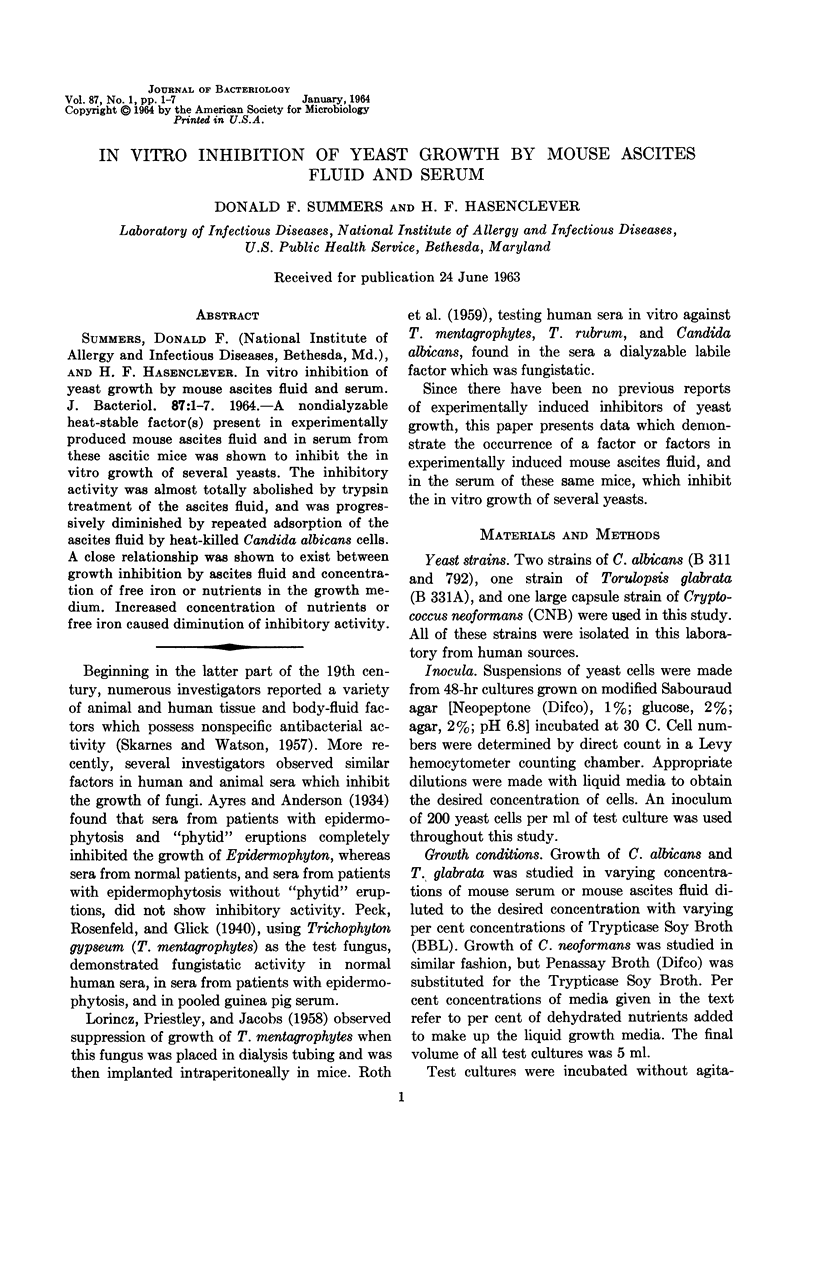
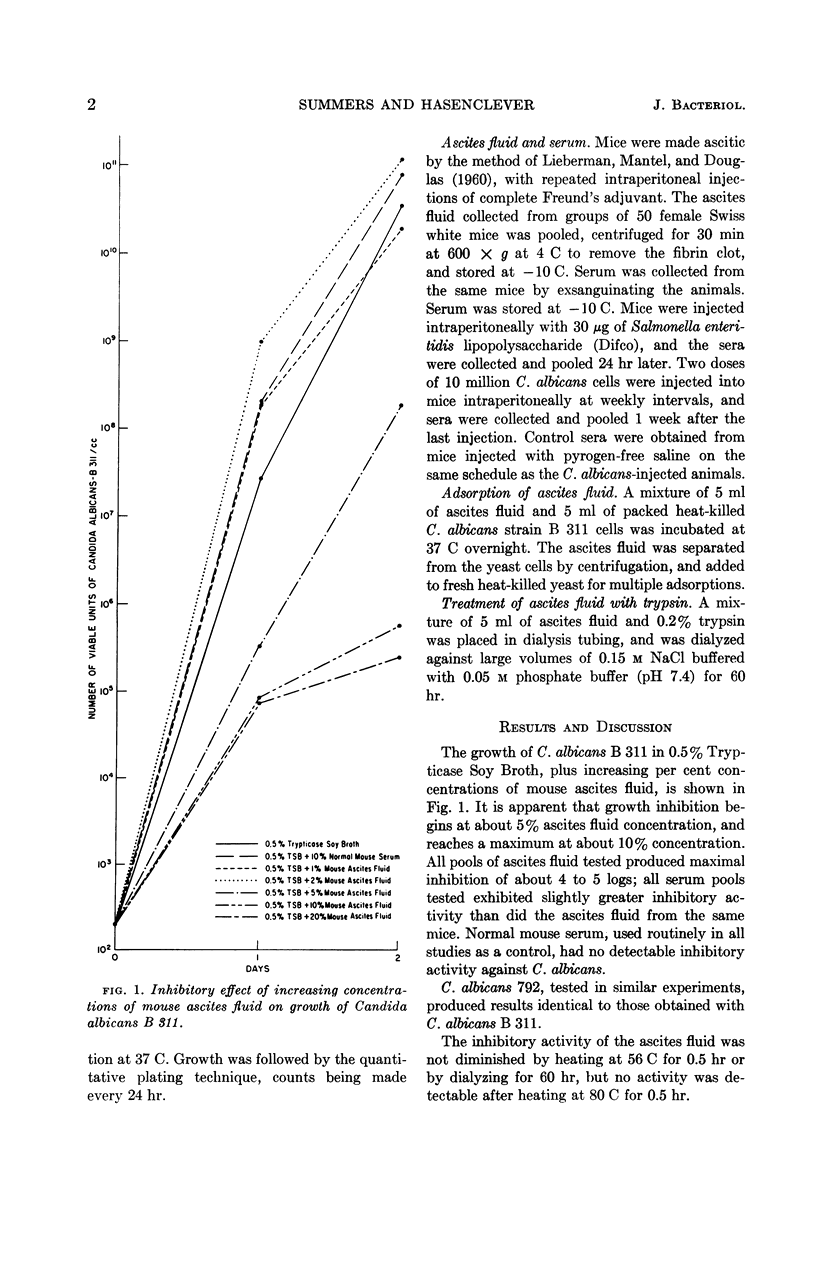
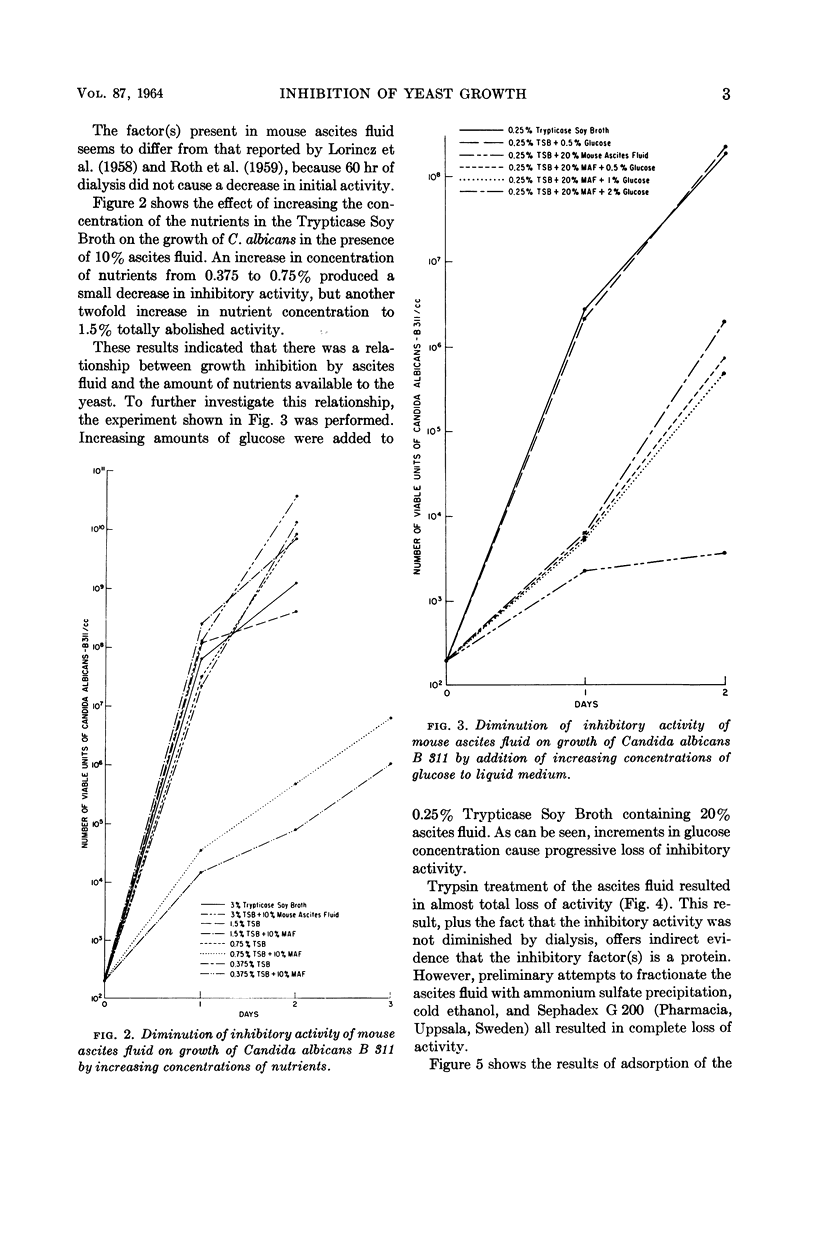


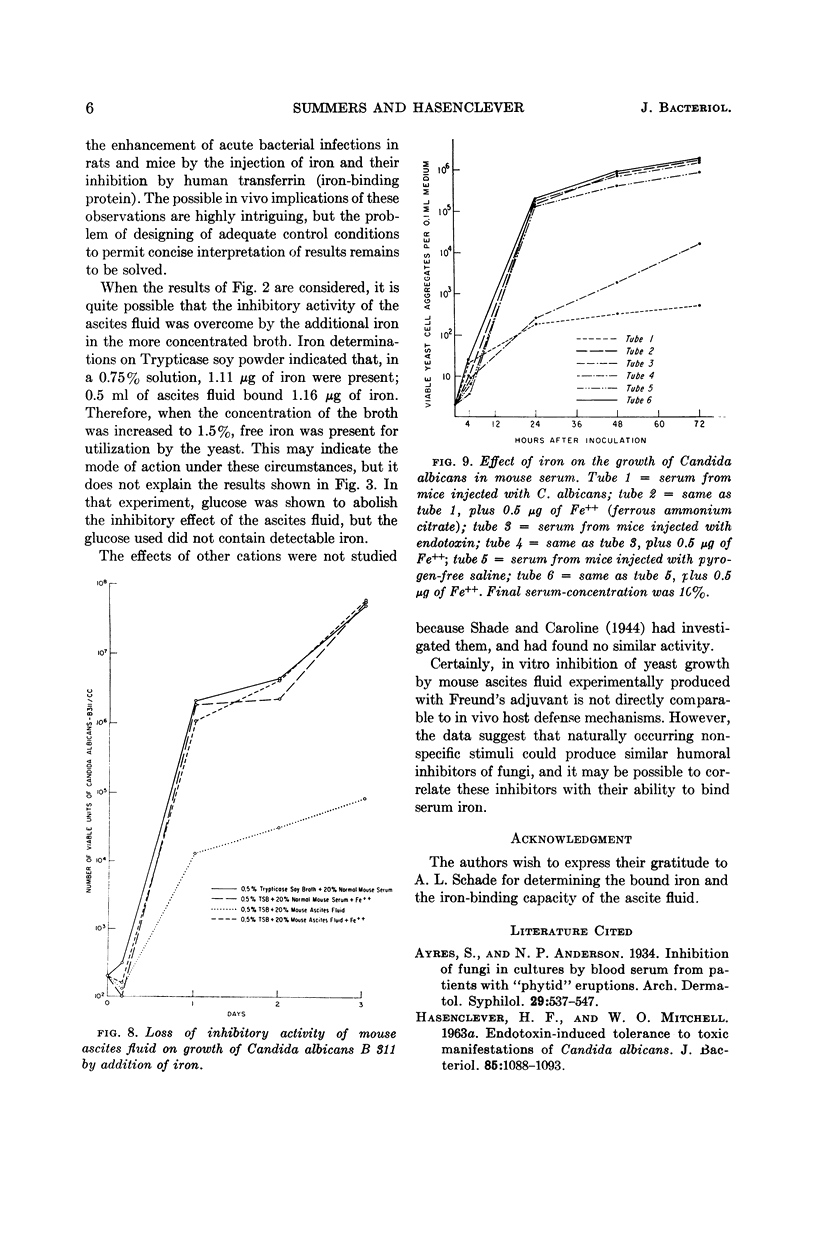
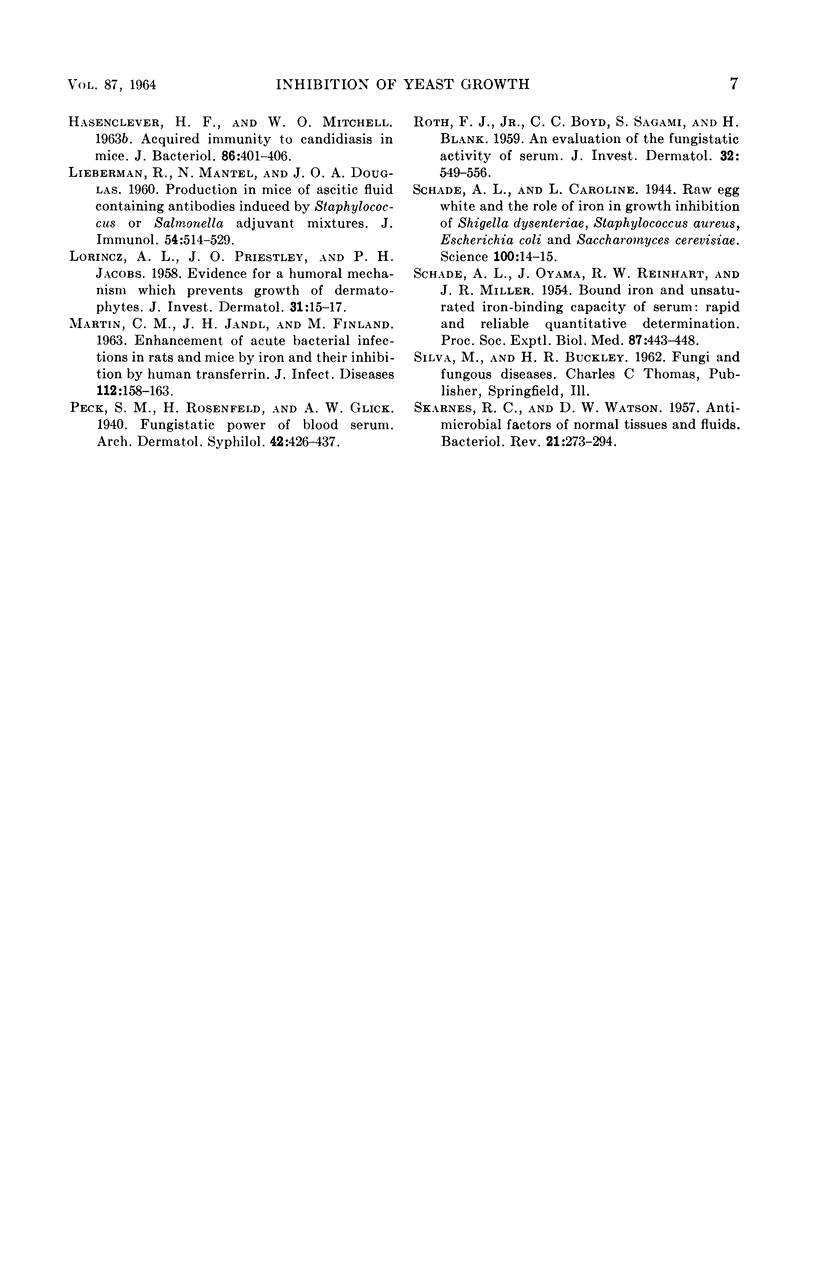
Selected References
These references are in PubMed. This may not be the complete list of references from this article.
- HASENCLEVER H. F., MITCHELL W. O. ACQUIRED IMMUNITY TO CANDIDIASIS IN MICE. J Bacteriol. 1963 Sep;86:401–406. doi: 10.1128/jb.86.3.401-406.1963. [DOI] [PMC free article] [PubMed] [Google Scholar]
- HASENCLEVER H. F., MITCHELL W. O. ENDOTOXIN-INDUCED TOLERANCE TO TOXIC MANIFESTATIONS OF CANDIDA ALBICANS. J Bacteriol. 1963 May;85:1088–1093. doi: 10.1128/jb.85.5.1088-1093.1963. [DOI] [PMC free article] [PubMed] [Google Scholar]
- LIEBERMAN R., DOUGLAS J. O., MANTEL N. Production in mice of ascitic fluid containing antibodies induced by Staphylococcus- or Salmonella-adjuvant mixtures. J Immunol. 1960 May;84:514–529. [PubMed] [Google Scholar]
- LORINCZ A. L., PRIESTLEY J. O., JACOBS P. H. Evidence for a humoral mechanism which prevents growth of dermatophytes. J Invest Dermatol. 1958 Jul;31(1):15–17. [PubMed] [Google Scholar]
- ROTH F. J., Jr, BOYD C. C., SAGAMI S., BLANK H. An evaluation of the fungistatic activity of serum. J Invest Dermatol. 1959 May;32(5):549–556. doi: 10.1038/jid.1959.92. [DOI] [PubMed] [Google Scholar]
- SCHADE A. L., OYAMA J., REINHART R. W., MILLER J. R. Bound iron and unsaturated iron-binding capacity of serum; rapid and reliable quantitative determination. Proc Soc Exp Biol Med. 1954 Nov;87(2):443–448. doi: 10.3181/00379727-87-21407. [DOI] [PubMed] [Google Scholar]
- SKARNES R. C., WATSON D. W. Antimicrobial factors of normal tissues and fluids. Bacteriol Rev. 1957 Dec;21(4):273–294. doi: 10.1128/br.21.4.273-294.1957. [DOI] [PMC free article] [PubMed] [Google Scholar]
- Schade A. L., Caroline L. RAW HEN EGG WHITE AND THE ROLE OF IRON IN GROWTH INHIBITION OF SHIGELLA DYSENTERIAE, STAPHYLOCOCCUS AUREUS, ESCHERICHIA COLI AND SACCHAROMYCES CEREVISIAE. Science. 1944 Jul 7;100(2584):14–15. doi: 10.1126/science.100.2584.14. [DOI] [PubMed] [Google Scholar]


